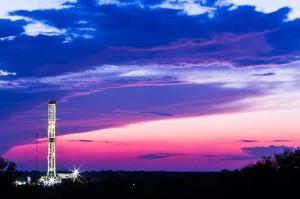Natural gas. More and more fleet owners, transportation managers and common carriers are replacing their gas-guzzling fleets to natural gas vehicles, and for good reason. The two biggest: lower fuel costs and its ability to advance corporate sustainability initiatives.
Natural gas is the cleanest, most affordable and most abundant transportation fuel. Today, natural gas prices are significantly less than diesel, with fuel cost savings of almost $2 per gallon. It’s also one of the cleanest burning fuels on the market, due to its chemical composition. In addition to its low cost and clean-burning qualities, the engines are quieter than diesel engines and natural gas is domestically abundant, with a supply estimated at 100+ years.
As a fleet owner, operator or carrier considering adding a natural gas component to your fleet, it’s important to understand the trends impacting this alternative fuel source.
3 trends impacting the natural gas evolution
- Smaller, more aerodynamic back-of-cab fuel systems
In terms of technology, one of the biggest movements in the industry is the relocation of fuel systems to the back of the cab, as natural gas trucks become more integrated and aerodynamic.Early systems essentially appended a big box on the back of the truck. This created drag, interfering with aerodynamic performance. Today, in an effort to improve fuel economy, natural gas fuel system manufacturers are working hard to make tank systems smaller, lighter and more aerodynamic.While back-of-cab (BOC) systems aren’t right for everyone, these adaptable fuel storage systems offer the lowest price per Diesel Gallon Equivalent (DEG) when compared to rail mounted systems. - Access to an expanding fuel and maintenance infrastructure
For many years, one of the biggest roadblocks to successful adoption of natural gas vehicles has been fuel and maintenance infrastructure constraints. However, the market is expected to grow significantly. The number of publicly accessible natural gas refueling stations jumped by a third in the last two years alone.According to the U.S. Department of Energy’s Alternative Fuel Data Center, there are now 1,393 Compressed Natural Gas (CNG) fueling stations in the United States, including 725 public and 668 private stations (you can learn more at http://www.afdc.energy.gov/fuels/stations_counts.html). With access to 700+ publicly accessible fueling stations, more fleet owners and operators can confidently replace some or all of their fleets with natural gas vehicles, knowing they’ll have convenient access to CNG stations.In addition, larger companies with big fleets are investing in and building their own fueling networks (think Ozinga, Kwik Trip, Waste Management and Frito-Lay). The advantage? They’re able to control their fuel supply and pay less for fuel. Some are also making those stations available to the public to generate additional sources of revenue. - Broader choice of engine options
At one time, natural gas vehicles were a one-size-fits-all affair. If you wanted a natural gas truck, you could get one with an 8.9-liter engine. Now, vehicles are available with 12-liter engines. The added capacity, horsepower and torque ratings open up a wider spectrum of transportation applications.Previously, natural gas vehicles could only haul loads up to 65,000 lbs., newer models can haul loads up to 80,000 lbs. As a result, they can transport heavier loads over longer distances, making natural gas a viable option for more routes and applications.
Want to learn more about advances in natural gas vehicle technology and the low-risk route to incorporating an alternative fuel component into your fleet? Stay tuned for my next post, where I’ll explore the advances that are transforming the industry, along with the challenges and ways to address them. You can also learn more by downloading our whitepaper on how we are helping bring you new technology for natural gas fleets..

David Mazaika is Executive Director, Strategic Development at Quantum Technologies. He is a transportation professional with more than 20 years of experience in alternative fuels and hybrid powertrains for heavy-duty buses and trucks. Throughout his career, David has played an active role in advancing the heavy-duty vehicle industry and bringing practical, cost saving technologies to market.

